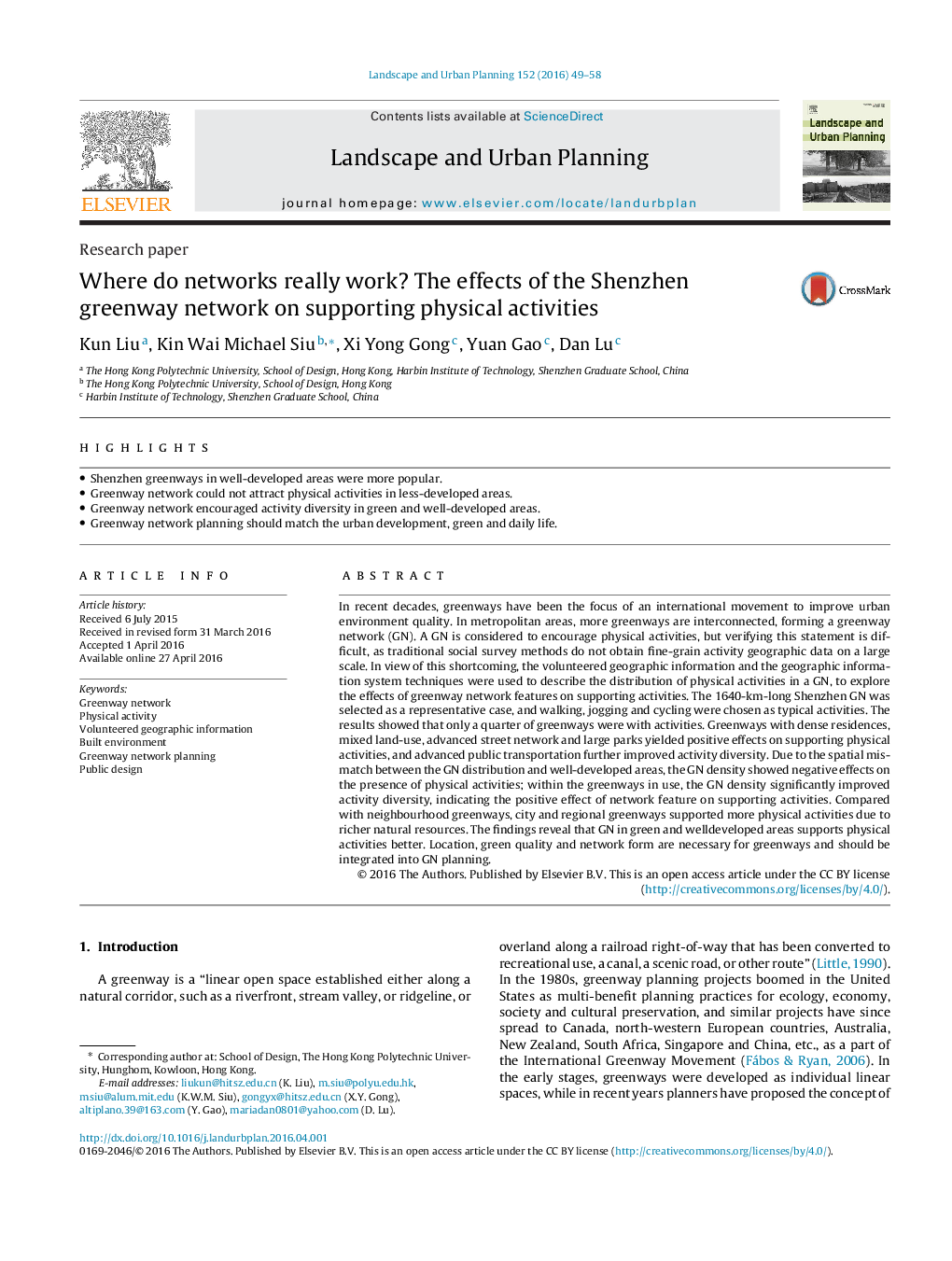| Article ID | Journal | Published Year | Pages | File Type |
|---|---|---|---|---|
| 7460595 | Landscape and Urban Planning | 2016 | 10 Pages |
Abstract
In recent decades, greenways have been the focus of an international movement to improve urban environment quality. In metropolitan areas, more greenways are interconnected, forming a greenway network (GN). A GN is considered to encourage physical activities, but verifying this statement is difficult, as traditional social survey methods do not obtain fine-grain activity geographic data on a large scale. In view of this shortcoming, the volunteered geographic information and the geographic information system techniques were used to describe the distribution of physical activities in a GN, to explore the effects of greenway network features on supporting activities. The 1640-km-long Shenzhen GN was selected as a representative case, and walking, jogging and cycling were chosen as typical activities. The results showed that only a quarter of greenways were with activities. Greenways with dense residences, mixed land-use, advanced street network and large parks yielded positive effects on supporting physical activities, and advanced public transportation further improved activity diversity. Due to the spatial mismatch between the GN distribution and well-developed areas, the GN density showed negative effects on the presence of physical activities; within the greenways in use, the GN density significantly improved activity diversity, indicating the positive effect of network feature on supporting activities. Compared with neighbourhood greenways, city and regional greenways supported more physical activities due to richer natural resources. The findings reveal that GN in green and welldeveloped areas supports physical activities better. Location, green quality and network form are necessary for greenways and should be integrated into GN planning.
Related Topics
Life Sciences
Agricultural and Biological Sciences
Ecology, Evolution, Behavior and Systematics
Authors
Kun Liu, Kin Wai Michael Siu, Xi Yong Gong, Yuan Gao, Dan Lu,
